Review: Tony Hawk RIDE (Wii)
At this year’s E3, Activision and Tony Hawk showcased the latest in the Tony Hawk Skateboarding franchise, Tony Hawk: RIDE. The response from show attendees wasn’t great, but it wasn’t all bad either. Most people felt the game showed a lot of promise and, being an early version of the game, didn’t judge it too harshly. Fast forward a few months to Tony Hawk: RIDE’s release date, and the response has been significantly lower across the board. Check out the full review below to see how Tony Hawk’s latest plays on the Wii.
Tony Hawk RIDE isn’t the most story-driven game ever, but like most Tony Hawk games, it doesn’t have to be. The game starts you off by letting you create your own skater as you work your way to being a pro. All of the tutorials in the game are voiced by Mr. Hawk himself and you’ll be given tips from other pro skaters as you progress through the game. As Tony Hawk mentioned in one of the tutorial videos, skateboarding is all about the freedom of expression which is emphasized throughout the game. Certain tutorials will ask you to do a specific move, but the key in the game is to be as creative as possible with your tricks. Combining different tricks and stringing them together will allow for higher multipliers which lead to higher scores. Sounds like a pretty standard Tony Hawk game so far right? Not so fast. Using the new, wireless skateboard controller, your freedom and tricks are now not limited to how many different buttons you press, but how many ways you can manipulate the skateboard controller.
The skateboard controller comes with each edition of Tony Hawk RIDE and is the only available control option for the game. The board itself is very well designed and feels, for the most part, like an actual skateboard. Obviously the board controller is a little thicker to allow for up to 300 lbs. of weight, but it’s surprisingly maneuverable. Nintendo’s Balance Board also has the same weight limit, but it is definitely not as maneuverable as the skateboard controller. The Balance Board seems to weigh about 30 or 40 lbs. while the skateboard is very light in comparison. The board features 4 light sensors, one on the front, right, back, and left parts of the controller. These sensors allow for detection of ollies, nollies, various grab tricks, and pushing off. The bottom of the board features a semi-contoured shape that has three flat areas for turning left, right, or keeping the board straight. All in all, the board itself is a very well designed peripheral.
Now that we have this new skateboard controller, how does the game actually play? Ironically, the skateboard controller was created specifically to make the latest Tony Hawk game ‘easier’ for gamers of various skill levels. But in practice, the shortcomings of the controls make the majority of the experience feel broken and almost unplayable. When I first started playing the game, I saw the tutorials section and thought ‘That’ll be a great place to start!’ Little did I know that the tutorials section is one of the most frustrating modes in the game. Each tutorial tells you how to move the board to accomplish a certain move and then let’s you loose to try the move in-game. The first couple tutorials were on basic turning and ollies, so those weren’t that bad. Then I got into the various flip tricks, and everything went to pieces. I watched the tutorial movie about 10 times to see exactly how to move the board and each time I had very different results. Sometimes I would do a Tilt Flip Trick when I wanted to do a Flick Flip Trick and vise versa. It honestly wouldn’t be that bad if you didn’t have to do a specific trick each time to finish a tutorial. I was able to do plenty of tricks, but not the exact one at the exact spot in the line. Once I headed into the actual game, things got a little better, though not by much.
The game itself features two main game modes: Road Trip and Exhibition. Exhibition is the equivalent of Quickplay where you can record points and high scores without having to complete challenges. Each level has 4 different modes to play through to get points to unlock new levels and gear: Speed Slalom, Trick, Challenge, and Free Skate. You don’t earn any points in Free Skate, but it’s the best mode to get used to the controls. In every mode, you have the option of choosing between 3 levels of difficulty: Casual, Confident, and Hardcore. I actually started out on Hardcore just to see how it went and it’s definitely the best mode if you want freedom of movement. That said, it’s not the best mode if you’re trying to achieve really high scores or have any assists on controls.
When playing alone, Tony Hawk RIDE is little more than a different way to break a sweat. However, when playing with friends, it can become a much more fun atmosphere similar to the effect that the Guitar Hero or Rock Band games have had on gaming. We all got together last weekend and played Tony Hawk RIDE with some pretty fun/hilarious results. We weren’t always the best at the game, but it was definitely fun watching another person play the game and pull off the occasional, amazing trick. The game only features a hot-seat multiplayer mode, but that’s not a bad thing since the amount of space needed to even play on one of the skateboard controllers. I was also able to play with a couple players that were more on the casual side of things and they had a great time with the game. My parents even showed some interest in trying it out! So I think, on the one hand, that Tony Hawk RIDE may have attempted too much for the hardcore crowd, but for the casual gamer, it can be a fun, intuitive experience.
Conclusion
Tony Hawk: RIDE is definitely a mixed bag. I feel like most people probably won’t give the game a chance because of critical reception and the high price tag ($120), but I think it can be a fun experience in the right hands. I think the generation of casual gamers that the Wii fosters could very well be the reason it’s even selling at all. But as a game that also aims to appeal to the long-time fans of the franchise, it falls short.
Tony Hawk: RIDE gets a 6.3/10

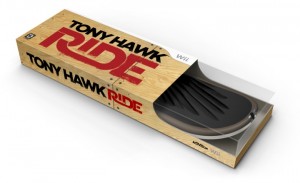
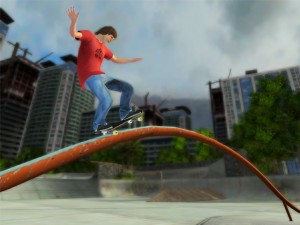
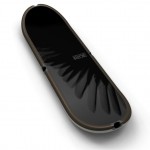
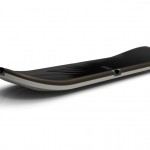
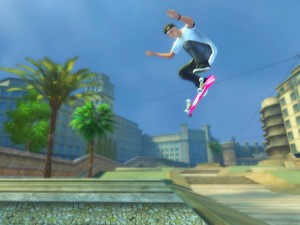
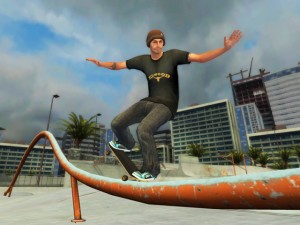


December 21, 2009
[…] Read the rest here: pure nintendo » Blog Archive » Review: Tony Hawk RIDE (Wii … […]
December 21, 2009
[…] Full review here addthis_pub = 'cortjezter'; addthis_hide_embed = false; addthis_options = 'delicious, digg, email, facebook, google, live, myspace, slashdot, stumbleupon, twitter'; Permalink […]
December 21, 2009
I love skateboarding so this is a game that I will enjoy.
November 22, 2010
… trackback …..
Superbe morceau de contenu mat¨¦riel, c’est-¨¤-dire semblable ¨¤ un site que j’ai. Veuillez tester les quelque temps et volontiers s’en aller m’a comenet sur elle et dire me ce que vous pensez. moncler http://johnforhost.ayubd.com/ doudoune moncler…
December 8, 2010
… ……..
grand Doudoune Moncler, http://www.blog-gratuit.com/trustes/ Achat Doudoune monlcer votre site design est certainement nice , je suis chasse pour un nouveau modèle pour mon moncler doudoune propre personnel weblog , j’aime v?tre, maintenant je vais al…